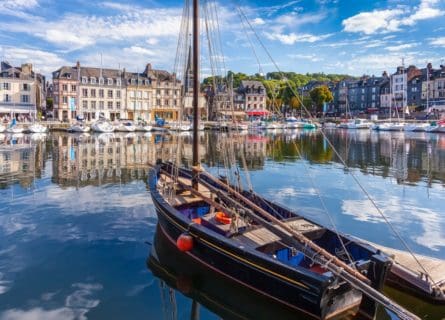
The Best of Normandy Cuisine Besides Camembert and Calvados
October 11, 2021
Normandy Gastronomy Guide: Delight in buttery apple tarts, succulent moules marinières, & more. Unveil regional cuisine now! 🍎
By: Nicole Dickerson / Last updated: April 10, 2024
Estimated reading time: 11 minutes
In the heart of northeastern France, the Alsace region serves as a culinary bridge between French finesse and Germanic robustness, presenting a cuisine renowned for its depth and rustic charm. Central to Alsatian culinary heritage are its signature dishes, which include the crisp and savory Flammekueche (also known as Tarte Flambée), the rich and comforting Pot au Feu, and Coq au Riesling—a creamy, wine-infused twist on the classic Coq au Vin. Not to be overlooked, Baeckeoffe blends marinated meats with spices in a slow-cooked casserole, epitomizing the region’s love for hearty fare.
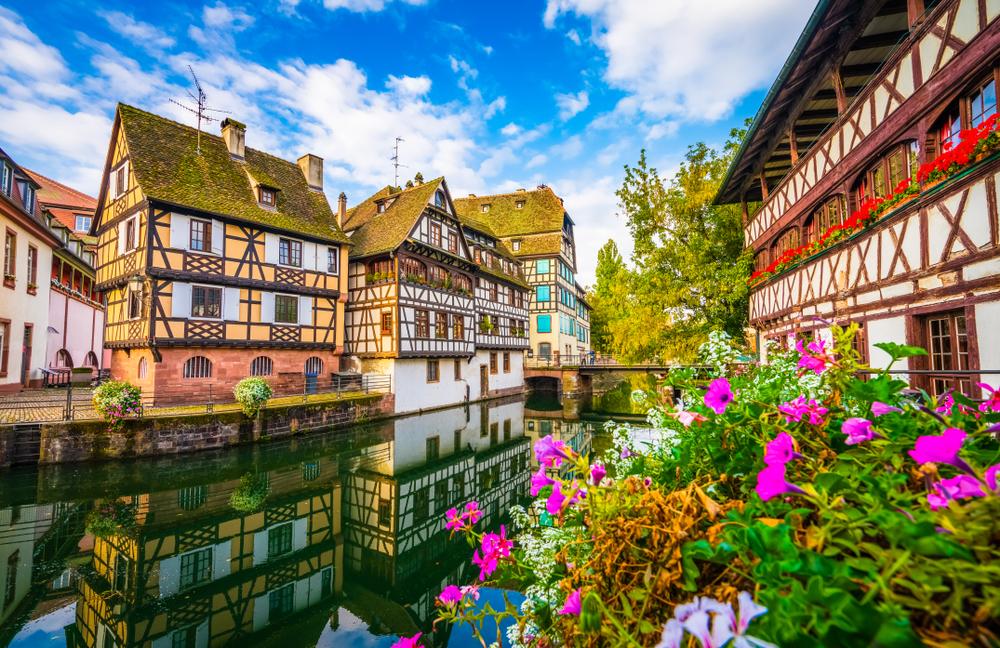
Guide to French Cuisine: Read more
With its assertive aroma, Munster Cheese stands as a testament to Alsatian dairy craftsmanship, beautifully complementing the region’s acclaimed white wines. Alsatian Foie Gras adds a luxurious touch to the local cuisine, reflecting centuries of gastronomic excellence. Alsace is also the proud cultivator of France’s most cherished asparagus, known locally as “Les asperges d’Alsace,” white asparagus is a prized variety for its tender, nuanced flavor.
Beyond these emblematic dishes, the Alsatian palate enjoys a foundation built on staples like potatoes, cabbage, sauerkraut, eggs, and pork, often brought to life with lentils and poached eggs for a blend of textures and flavors. This culinary tradition invites enthusiasts on a journey through one of France’s most storied gastronomic landscapes, where every meal celebrates rich flavors, from sumptuous casseroles to artisanal cheeses.
Alsace and Germany even share a continuation of the same mountain range. They call them the Haardt Mountains in Germany; in Alsace, they’re known as the Vosges Mountains. They protect Alsatian vineyards from westerly rain-bearing winds, helping the wine region’s leading grapes, such as Riesling, Gewürztraminer, Pinot Gris, and Muscat grapes thrive.
These local Alsatian wines pair well with Alsatian Cuisine, which is rich, substantial, and suitable for the region’s cooler continental climate. In addition to boasting some of France’s finest white wines, Alsace is also the country’s predominant beer-producing region. Strasbourg is the beer production center in Alsace, housing Heineken, Karlsbrau, Kronenbourg, and countless microbreweries.
When visiting Alsace, enjoying an authentic Alsatian meal at a winstub is essential. A winstub, which translates to wine lounge, was originally a room for public use where winemakers could sell the surplus of their annual production. Today, they’re more like rustic restaurants where you can savor your meal sitting elbow to elbow at wooden tables with checkered tablecloths. Wine is served from carafes, and the meals are simple, straightforward dishes like choucroute garnie and baeckeoffe.
For an alternative authentic Alsatian dining experience, head to a local ‘Farm inn’ amongst the Vosges Mountains for a repas marcaire meal. This culinary tradition is typical of the Munster Valley and includes Munster cheese, soup, or a meat pie. They also serve Roïgabrageldi, a heartwarming dish of potatoes cooked in butter and lard, accompanied by smoked pork meat. A repas marcaire offers a simple yet replenishing meal ideal for filling up after a long hike through the Vosges.
With grapes like Riesling, Gewürztraminer, and Muscat, there are several aromatic white Alsatian wines to choose from for l’aperitif. For something more festive, reach for a Crémant d’Alsace, an affordable sparkling wine made using the traditional method of champagne. For l’aperitif, pretzels or bretzels are commonly enjoyed alongside a glass of bubbly or a frothy beer. Alternatively, they top pretzels with cumin seeds, minced onions, or smoked salts. Local bakeries, bistros, and bars frequently serve them.
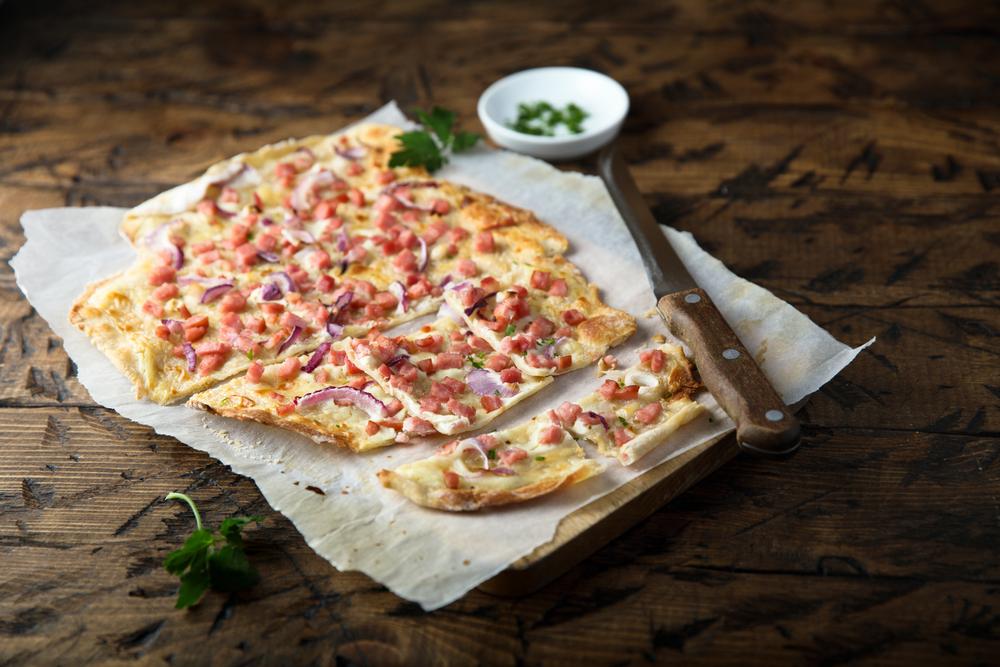
Also called a tarte flambée, Flammekueche is one of the most popular entrees in Alsatian cuisine. Appropriately named flame cake, flammkuchen is a thin, crispy, rectangular flatbread traditionally cooked in a fire-burning oven surrounded by flames. This tarte flambée combines Crème Fraîche, thinly sliced onions, and crispy bacon for a simple yet delicious topping. It pairs well with Alsace’s white wines, offering a balanced taste experience.
Tarte à l’oignon is made with a rich egg custard seasoned with salt, pepper, nutmeg, onions, and bacon. The savory tart resembles an open pie and is not quite as deep as a traditional quiche. Aromatic and savory, Tarte à l’oignon pairs deliciously with Pinot Blanc or a local Sylvaner. Supposedly, bakers created this onion tart to test the temperatures of their ovens before baking bread. Thus, they’d know when the ovens were hot enough to start baking bread, depending on how long it took to cook the Tarte à l’oignon.
Alsace is famous for its charcuterie, and the region produces various delectable saucisses or sausages. One of the most frequently savored sausages is called knack d’alsace, named for the crisp, popping knack noise they make when bitten into. To make knack, artisans stuff pork, beef, and spices into natural casings and smoke them over beechwood. Traditionally, people serve knack d’Alsace with boiled potatoes, sauerkraut, and mustard.
Cervelas is another to of sausage that combines beef and pork and is sometimes stuffed with cheese, wrapped in bacon, and then fried. Other Alsatian specialties include pear-shaped beer sausages marinated in Alsatian beer, blood sausages made from a mixture of blood and lard, and presskopf, a pressed head-meat sausage.
A renowned delicacy of the region, Alsatian foie gras is a goose liver paté with a buttery texture and slightly sweet flavor. Jean-Pierre Clause created the original recipe for foie gras in 1780 for the military governor of Strasbourg in Alsace, made from the livers of force-fed geese; foie gras comes in various preparations from terrines to cans or an elegant mousse. Foie gras is often enjoyed on toasted bread sliced thinly and sprinkled with salt.
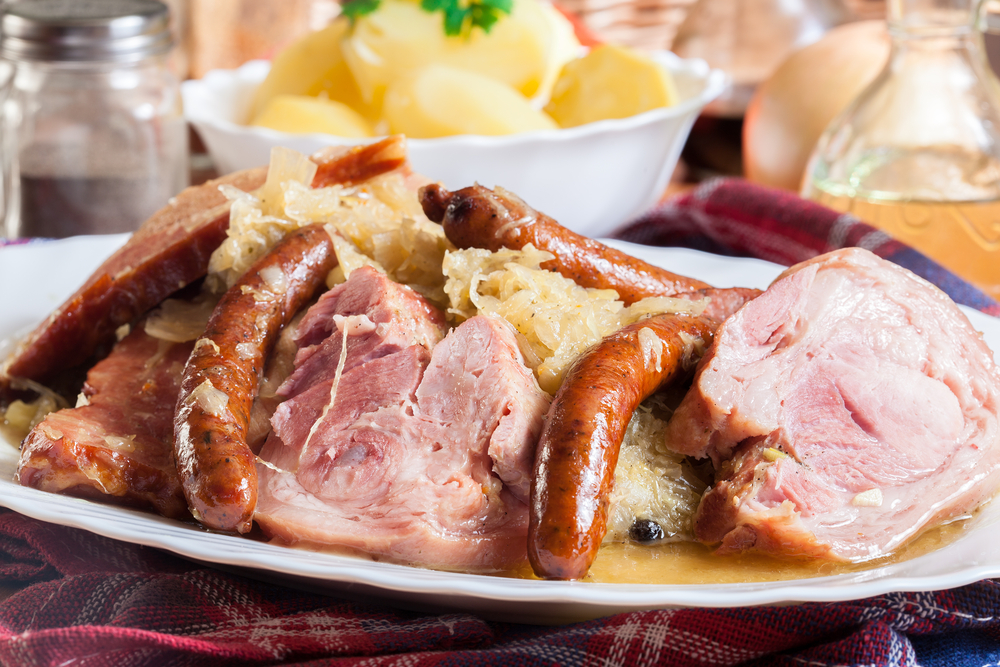
Baeckeoffe, or baekenofe, means baker’s oven and is a traditional recipe in Alsatian Cuisine. Chefs make the casserole by layering marinated meats, usually pork, beef, and lamb, with potatoes and onions, covering everything in local white wine, and then baking it. Traditionally, housewives would make the dish on Mondays while doing home laundry. They’d prepare the baeckeoffe and leave their baking dishes at the local bakers in the morning to be cooked in his wood-burning oven. They’d pick up their cooked baeckeoffe when ready for the midday meal. Locals enjoy baeckeoffe more frequently as a seasonal staple when temperatures drop in the winter.
Sauerkraut is a staple ingredient in Alsatian Cuisine and claims a starring role in the regional specialty choucroute garnie. Alsatian choucroute, or white cabbage, undergoes shredding, salting, and fermenting in wooden barrels. They marinate the choucroute with juniper berries, cloves, bay leaves, garlic, goose fat, and preferably Alsatian white wine, like Riesling. Then ham hocks are added along with sausages and occasionally other meats like pork loin, pork shoulder, and smoked or fresh beef to the choucroute stock and cooked together. To serve the choucroute garnie, they pile the sauerkraut high, accompany it with boiled potatoes, and top it with cooked pork and sausages. Savor this classic Alsatian dish with a dry Riesling or a local beer.
For a lighter take on Burgundy’s coq au vin, coq au Riesling is a creamy chicken stew-like dish made with mushrooms, lardons, onions, butter, heavy cream, and dry Alsatian Riesling. In Alsace, they serve coq au Riesling with egg noodles or spätzle for a heartwarming meal and classic Alsatian comfort food.
Another classic stew-like Alsatian dish, pot au feu, consists of meat and vegetables. It’s an ancient French peasant dish popular in the winter, and the name translates as ‘pot on fire.’ Historically, peasants would make pot au feu with lesser cuts of meat cooked in a pot over an open flame. Then, they cook the meat with whatever vegetables are available, such as potatoes, carrots, onions, and turnips.
Pot au feu is cooked long and slow over low temperatures. As the broth boils, it becomes more flavorful and concentrated. Traditionally, they serve the broth first, followed by the meat and vegetables. In Alsace, the dish is typically accompanied by a creamy horseradish sauce.
Artisans make Truite au bleu with trout from the rivers and lakes of the Vosges Mountains. After gutting the fresh fish, they soak the trout in vinegar, turning it blue due to a reaction between the vinegar and the trout’s skin mucus. Next, they boil the fish in court-bouillon, including carrots, sliced onions, bouquet garni, vinegar, and wine. Once cooked, they serve truite au bleu with steamed potatoes, melted butter, and, ideally, a lively, mineral-driven Riesling.
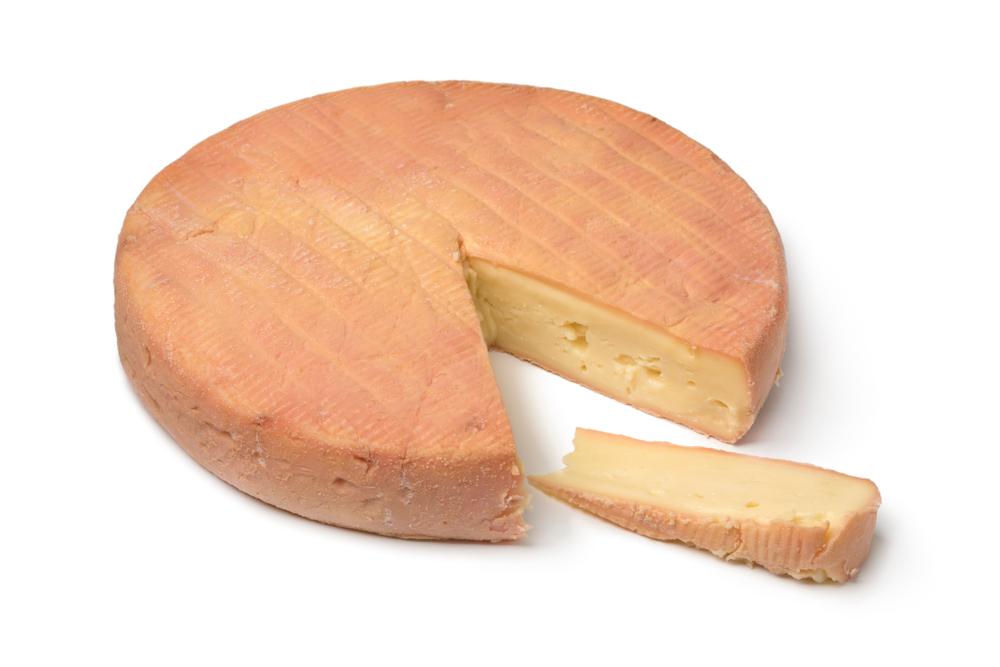
Munster is the most widely savored cheese in Alsatian Cuisine. Cheesemakers make this French soft, washed-rind cheese with milk from cows grazing in the Alsace, Lorraine, and Franche-Comté regions. Abbeys and monasteries in the town of Munster in the Vosges first made the cheese during the Middle Ages, giving it its name. In Lorraine, people knew Munster cheese as Géromé until 1978, when it received protected AOC status, formally designating it as Munster AOC and Munster Géromé AOC.
Under the AOC guidelines, producers must make Munster from raw, unpasteurized cow’s milk. The washed rind process results in a slightly red-colored rind that protects the cheese and contributes to the robust and tangy flavor for which Munster is known.
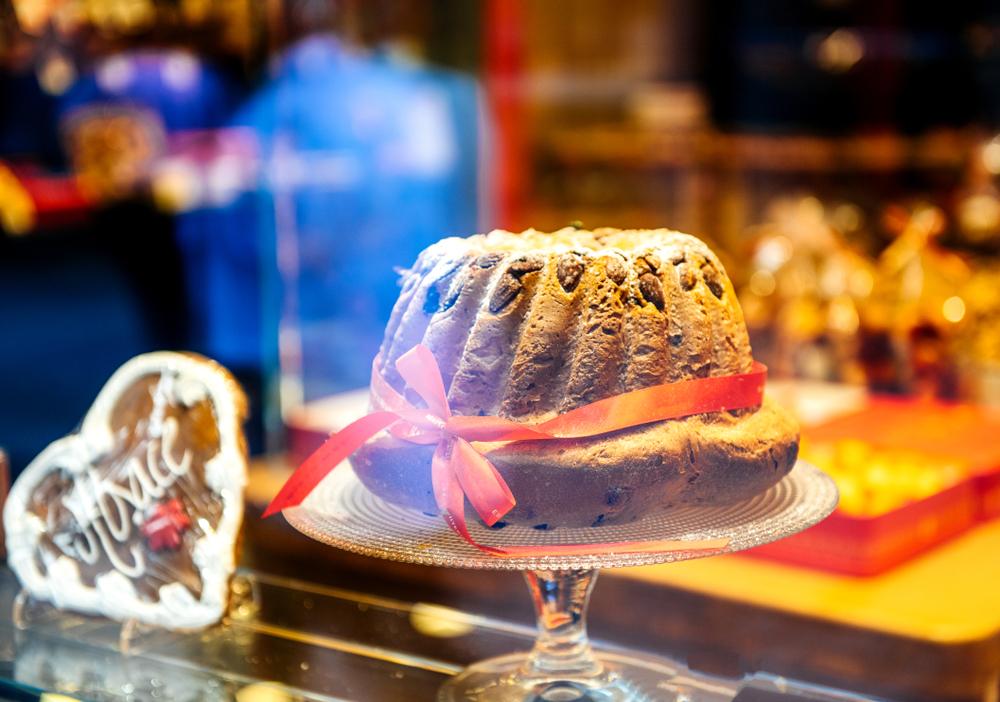
Fruit tarts are frequently enjoyed as dessert in Alsatian Cuisine. Tarte aux fruits are simple to prepare and incredibly delicious, made with apples, pears, rhubarb, cherries, or plums. First, they make the dough for the tart with flour, water, margarine, and sugar. Next, they fill the pastry with sliced fruit covered in a custard made of eggs, sugar, vanilla, and cinnamon and then bake it.
Local artisans bake Kougelhopf, a yeast-risen cake dotted with raisins, in an earthenware mold to create its signature tall shape. They sprinkle sliced almonds in the molds before pouring in the batter. Finally, they top the finished Kougelhopf with almonds and then sprinkle it with icing sugar.
Bredele is baked around Christmas time in Alsace. These small biscuits or Christmas cookies come in various flavors, including lemon, honey, and almond. The first Bredele was created in the 14th century. They became more festive and decorative in the early 19th century when cookie cutters made their way into the kitchens of Alsace.
Alsace is home to numerous top-tier restaurants, including several Michelin-starred establishments. Here is a list of cellar tours recommended to our clients:
| Name | Location | Stars | |
| Auberge de l’Ill | Illhaeusern | ** | This iconic restaurant has been a beacon of French gastronomy for decades, known for its refined Alsatian cuisine. |
| La Table d’Olivier Nasti | Kaysersberg | ** | Chef Olivier Nasti’s restaurant offers innovative dishes that are deeply rooted in the local terroir. |
| L’Atelier du Peintre | Colmar | * | Known for its creative cuisine, this restaurant offers a blend of traditional and modern dishes. |
| JY’S | Colmar | ** | This restaurant by Chef Jean-Yves Schillinger presents a fusion of French and global flavors with a beautiful setting by the water. |
| Au Crocodile | Strasbourg | * | With a history dating back to the 19th century, this restaurant offers a contemporary take on French cuisine. |
| Umami | Strasbourg | * | Combines global flavors in classic dishes by Chef René Fieger, who alone serves standout meals to 16 guests in Petite France. |
| 1741 | Strasbourg | * | Offers a refined dining experience, showcasing chef Jérémy Page’s precise, Alsace-inspired dishes and a notable Alsace wine selection. |
| Les Funambules | Strasbourg | * | Chef Guillaume Besson offers a balanced, modern dining experience with a minimalist flair inspired by the precision of tight-rope walking. |
| De:Ja | Strasbourg | * | Since 1789, this venue has combined modern tastes with traditional elegance, offering innovative dishes, professional service, and a notable wine cellar. |
| Le Relais de la Poste | La Wantzenau | * | Chef Guillaume Besson offers a balanced, modern dining experience with a minimalist flair inspired by the precision of tightrope walking. |
| La Fourchette des Ducs | Obernai | This restaurant is known for its elegant dining experience and creative dishes inspired by Alsatian traditions. |
If you would like us to customize an exclusive luxury tour, contact us and let us know your travel plans. We offer luxury food and wine tours for private groups of a minimum two guests. In addition, all of our private, chauffeured tours are available year-round upon request.

